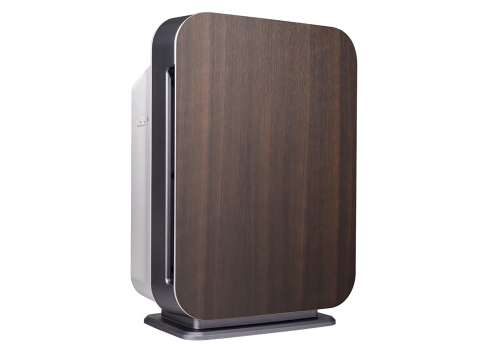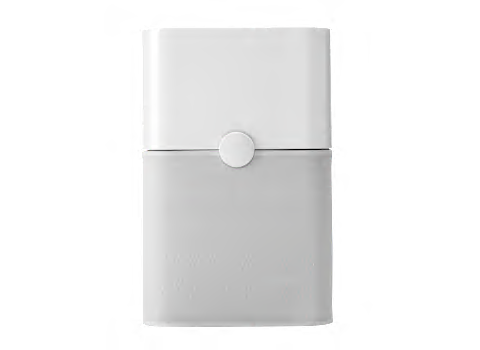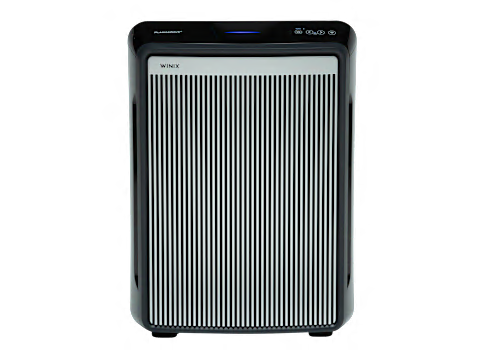These models can help you remove harmful particles. There are also other steps you can take to improve indoor air quality.
The sun rises over the smoke-shrouded New York City skyline on June 7, 2023, as smoke from the Canadian wildfires blankets the northeastern United States.
By Tanya A. Christian
The National Interagency Fire Center has reported that, as of June 2, 2023, more than 18,400 wildfires across the US have burned 518,698 acres, creating hazardous air quality conditions for the process.
Smoke from a wildfire can make your eyes burn and your nose run. (Read below our tips to protect yourself from smoke). In addition, microscopic particles from smoke can enter your lungs and cause bronchitis, asthma attacks, heart attacks and strokes, among other problems, according to the Centers for Disease Control and Prevention (CDC). ) and the Environmental Protection Agency (EPA).
These tiny particles have even been linked to premature deaths in people with heart and lung disease. And children who breathe smoke from wildfires can experience chest pain and tightness, wheezing, coughing, dizziness and shortness of breath.
If you live in an area prone to wildfires, the general recommendation is to avoid outdoor activities and keep your home windows closed. But research from the University of California at Berkeley has found that some of the most dangerous particles produced by smoke from wildfires can penetrate closed doors and windows, causing poor indoor air quality. It’s important to keep indoor air as free of smoke particles as possible, and an air purifier can help. Our tests of air purifiers with HEPA filters have shown that they can help remove these harmful particles; the aforementioned study suggests that they may even halve the level of these irritants.
How to Choose an Air Purifier for Wildfire Smoke
Not all air purifiers remove smoke particles well (you can check this out in our air purifier ratings). The most effective against smoke have a HEPA filter and a large fan that helps force air through a fine mesh to trap particles.
The best air purifiers equipped with HEPA filters can reduce particulate concentrations by up to 85%, according to the EPA. If you want to get rid of the smell of smoke in addition to particulates, you’ll need an air purifier that also has a large carbon filter to absorb odors.
HEPA air purifiers can range from $50 to over $1,000. Our experts advise against buying an air purifier for rooms smaller than 150 square feet. These models tend to perform poorly in our tests, plus you’ll always get better results with a drive that’s well-rated for a larger space than you intend to use. Purifiers for rooms larger than 350 square feet remove smoke much better. Most CR-recommended air purifiers fall into that category.
“If you look at any of the top-rated air purifiers tested in our labs, they’re physically big because of the big HEPA filter inside,” says John Galeotafiore, Consumer Reports associate director of product testing. “That’s the one thing they all have in common.”
How Consumer Reports tests air purifiers
To test how well these machines trap small particles in smoke, we inject cigarette smoke particles into a sealed room and use a particle counter to measure the number and size of particles, as small as 0.1 microns, in the room. , while an air purifier is running. Since air purifiers often have multiple speed settings, we tested smoke removal at the highest speed and at the lowest speed. (Some models that work well at high speeds don’t do as well at low speeds.)
We also measure noise levels at all speeds of a machine, because you’ll need to run it 24 hours a day to be effective. And we calculate annual operating costs, including filter replacements and energy use.
For more information on air purifiers, see CR’s air purifier buying guide. Read below for ratings and reviews of five air purifiers from our tests that do well at reducing wildfire particulates. But keep in mind that availability may change depending on the season.
The best air purifiers for wildfire smoke
These six air purifiers (listed in alphabetical order) top our scores, successfully passing our particulate reduction tests at both high and low fan speeds.
Alen BreatheSmart 75i Pure
Blueair Blue Pure 211+
Windows 9800
More tips to protect yourself from smoke
Smoke can travel hundreds of miles from its source, so even if you live far from a fire and are not in immediate danger, you could still have harmful smoke coming into your home. Using an air purifier helps, but there are more things you can do to keep your home as smoke-free as possible.
- Close all windows and doors and seal any air leaks (including the mail slot, if you have one) with weather stripping, if any. Even if it’s with duct tape, it’s better than nothing.
- If it’s too hot to not use a window air conditioner, close the outside air damper if you can and seal any gaps between the unit and the window.
- If you must leave the house, wear safety glasses and a NIOSH-approved respirator that is designed to block particles from entering your mouth and nose. If you don’t have an air purifier and the smoke is very heavy, consider taking this protective gear indoors as well, whenever you can. While surgical masks protect from exposure to COVID-19, they will not protect you from smoke inhalation.
- Try to spend most of your time in a room with the fewest windows and no chimney or vents leading to the outside. If you have a fireplace, close it.
- If you have an air purifier, use it in this room and keep it running 24 hours a day.
- Change the air purifier filter as soon as the indicator light comes on or according to the time specified in the manual. If you can’t change it right away, keep using the air purifier until you can make the change. A dirty filter is still better than not using the air purifier at all.
- If you have central heating, ventilation and air conditioning, you can install a high-efficiency filter (MERV 13 or higher) in the system. Run the system fan as often as possible to get the most out of the filter. If your system has a cold air option, turn it off or close the intake.
- Close the doors to the laundry room and bathrooms, as these rooms often have vents leading to the outside.
- HEPA filter vacuums can help you remove and trap smoke particles that have settled on your carpet and furniture. But don’t use a vacuum that doesn’t have a HEPA filter; all it will do is expel more particles into the air. For the same reason, clean hard surfaces with a damp cloth or mop.
Consumer Reports is an independent, nonprofit organization that works side by side with consumers to create a fairer, safer, and healthier world. CR does not endorse products or services, and does not accept advertising. Copyright © 2023, Consumer Reports, Inc.
Consumer Reports has no financial relationship with the advertisers on this site. Consumer Reports is an independent, nonprofit organization that works with consumers to create a fair, safe, and healthy world. CR does not endorse products or services and does not accept advertising. Copyright © 2023, Consumer Reports, Inc.



